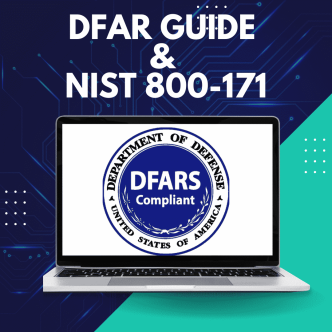What are NIST Hardening Standards?
NIST hardening standards and best practices refer to a collection of guidelines and recommended methods created by NIST (National Institute of Standards and Technology). These standards are crafted with the intention of strengthening the security and robustness of information systems. They serve as a structured approach for organizations to fortify their systems against possible security vulnerabilities and the risks associated with them. By adhering to these guidelines, businesses can establish a more resilient defense against potential threats and attacks on their systems.
What is NIST?
NIST, which stands for the National Institute of Standards and Technology, was established in 1901 and operates under the U.S. Department of Commerce. With its rich history, it ranks among the United States’ most enduring physical science laboratories. Its foundation was laid to address obstacles linked to industrial competitiveness, fostering advancements in scientific and technological domains. Additionally, NIST plays a pivotal role in setting forth hardening guidelines and promoting secure configurations to bolster information system security and resilience.
NISTs Framework and Functions
NIST plays a pivotal role in shaping cybersecurity measures that cater to the requirements of industries, the general public, and federal agencies. NIST System Hardening Checklist recommends keeping systems updated.
One of the notable contributions from NIST is the cybersecurity framework, which is characterized by an outcome-based approach. This unique attribute enables the framework’s applicability in diverse sectors, irrespective of the size of the business. This framework not only provides a comprehensive strategy to address cybersecurity concerns but also underscores the significance of adhering to effective hardening techniques. These techniques encompass various forms of system hardening aimed at enhancing the security and resilience of information systems.
There are three basic pillars of the NIST cybersecurity framework, namely;
- Framework Core
- Profiles
- Implementation Tiers
The framework core has five major functions:
- Identify
- Protect
- Detect
- Respond
- Recover

Organizations should apply system hardening checklists to operating systems and applications to reduce vulnerabilities and to lessen the impact of successful attacks.
NIST maintains a National Checklist Program (NCP) defined by the NIST SP 800-70 is located at https://ncp.nist.gov/repository, which is a repository of information that describes each checklist primarily developed by the federal government, and has links to the location of other checklists. Users can browse and search the repository to locate a particular checklist using a variety of criteria.
What is the relationship between hardening and NIST standards?
System hardening is an essential application of system hardening best practices across applications, systems, and infrastructure, among other foundational elements. By adhering to these guidelines, sourced from reputable references like CIS benchmarks, organizations can significantly lower security risks and eliminate potential vulnerabilities. There are many types of hardening, some of them are listed below:
- Application Hardening
- Server Hardening
- Database Hardening
- Network Hardening
- Operating System Hardening
NIST and Hardening
NIST provides a variety of security configuration hardening with instructions and procedures namely, NIST 800-123, a document that specifically focuses on hardening, this document includes:
- A system security plan must be established
- The operating system must be patched and updated all the time
- Unnecessary applications, services, and networks must be removed or disabled
- Operating system user authentication must be configured
- Resource controls must be appropriately configured
NIST has also published a guide named NIST SP 800-123 "General Server Security" which emphasizes the guidelines on how to secure systems by using the best available practices for hardening and configuring.
This guide helps demonstrate the below-mentioned services:
- Server Security Planning
- Securing the Server's Operating System
- Securing the Server Software
- Maintaining the Security of the Server

Best System hardening also called lockdown hardening include:
- Urge the users to create strong passwords and modify passwords from time to time
- All the unneeded software, drivers, and services must be removed or disabled
- Allow the system to automatically update
- Unauthorized user access to the system must be limited
- All the errors, suspicious activity, and warnings should be documented
Maintaining a consistently hardened system is paramount in minimizing risks associated with unauthorized access, data breaches, network traffic manipulation, and compromised user accounts. Such a robust approach substantially reduces the likelihood of breaches and attacks. However, even a slight deviation from established hardening standards could lead to vulnerabilities that attackers are quick to exploit. Staying vigilant and regularly updating your organization’s practices in alignment with hardening guidelines is crucial for mitigating potential attack vectors and safeguarding against security breaches.
How to Harden Your System?
Hardening is a dynamic process, and in complex IT environments, it often proves challenging, demanding extensive time, resources, and frequently leading to system downtime. Implementing robust security measures involves configuring properly various elements such as operating systems, network devices, and specific IT products. More than 60% of IT teams reported they experience downtime during infrastructure hardening.
As you’ve read, system hardening involves implementing various measures to enhance security and protect against potential threats. It includes actions such as applying security patches, configuring firewalls, and adhering to standards like PCI DSS (Payment Card Industry Data Security Standard). By adopting these types of system hardening practices, organizations can effectively reduce the attack surface, making it more difficult for malicious actors to gain unauthorized access and ensuring a more robust defense against cyberattacks.
The best solution for this challenge is to automate the hardening procedure. A good hardening automation tool should generate an impact analysis report automatically, enforce your policies on your production and maintain your servers' compliance posture. A hardening automation tool is essential for minimizing the attack surface and achieving compliance at large and complex infrastructures.





